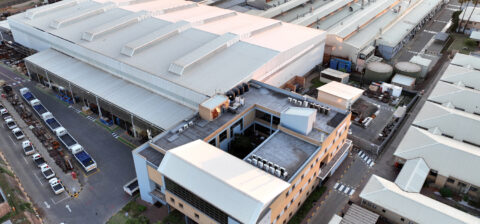Sunday Times Supply Chain
The Retail Supply Chain’s Recovery
Oh, to be a retailer these days. From changes in consumer behaviour and other disruptions brought about by the COVID-19 pandemic, to spiralling shipping costs, stop-start production and issues with Chinese imports, it’s been a bumpy road for the past two years. We’re not over the hill just yet, so retailers are still having to learn, adjust and plan accordingly.
The COVID effect
Simply put, global supply chains are still nowhere near as resilient as they were prior. The reasons for this are myriad and complex.
“When COVID hit, all the retailers cancelled orders with suppliers locally and internationally because they were afraid they would end up overstocked with goods they couldn’t sell,” says Jan Tukker, managing director of supply chain consultancy BusinessChain. “Then when the supply chain opened up, the flow of goods was not as smooth and regular as it was in the past, a lot of which has to do with container availability and increased shipping costs.”
Tukker says although retailers won’t have their optimal stocks in stores yet, “they’re certainly on the way to recovery, and turnover in a lot of these companies is quite good considering what they’ve been through”.
Shipping costs
If there’s one thing that’s hit retailers hard – and will hit consumers in time – it’s shipping costs, which have skyrocketed since early 2020. This has predictably thrown many a retailer’s recovery plans into disarray.
“It’s put everyone on the backfoot,” says Andrew Dinnie, sales director for DSV Air & Sea. “Retailers are still trying to plan their supply chains around what the freight cost was. How does a merchandiser, planner or product category specialist contend with freight costs that are now significantly impacting the cost of their product? They can’t put products on shelves at the same prices as before. I think that’s where the food and consumer brand retailers are really battling now.”
Dinnie says retailers are now pushing back and cancelling orders because they can’t afford these costs, which means products aren’t on shelves and sales are lost.
There are a number of reasons behind these soaring freight costs. From a South African perspective, the size of our market really doesn’t help.
“Because the South African trade lane is so small, we’re severely impacted when carriers choose to serve the larger trade lanes like Europe and the US instead,” says Dinnie. Moreover, supply chain issues in Europe or the US will have a ripple effect on South Africa.
“The Omicron variant has hit Europe hard, and their issues around terminal capacity and labour mean they can’t serve the carriers correctly, leading to delays. This has resulted in container equipment and large-capacity vessels being taken off the South African trade lane to service the larger ones.”
This means that the vessels serving our trade lane are smaller, which creates a general constraint on carrying capacity. “The carriers will pitch their prices in terms of the supply-demand economy curve, which is what is creating this freight rate crisis,” says Dinnie. “There’s general consensus that it’s not going to improve this year, and may run into the first quarter of next year too.”
Service integrity
Freight carriers have been affected by a host of factors including COVID-19, port delays and closures, and Transnet issues, impacting the quality of the service. “The service integrity of ocean freight carriers has been severely challenged,” says Dinnie, referring to the reliability with which a ship will visit every port on its itinerary. Two or three years ago, freight movers would be happy with an average service integrity of 90 per cent; now they’re battling to get 40 per cent.
“You can’t plan,” Dinnie continues. “We have to explain this situation to retailers. Normally, you’d plan for whatever trade lane made sense in terms of consistency and transit times. We now have to add three-to-six weeks’ buffering time. There’s no more just in time any more; everything is just too late.”
Freight movers are under huge pressure to move cargo, says Dinnie, but right now a large part of their role is providing intelligent information so retailers can plan accordingly. “We all have to plan in way more detail, way earlier. We want to part of the planning conversations with retailers so we can feed them better information, so they can plan better.”
Bringing stock in earlier doesn’t necessarily solve the problem either, because if everybody thinks the same, then there’s a rush on demand earlier in the year, which creates issues. “It’s about trying to spread your orders evenly so you don’t get caught out, so you have a more frequent supply of your various categories,” Dinnie explains. “That way you can keep your supply chain going, have product on the shelf and maintain sales.”
Source of the issue
It also matters where those goods are coming from, says Dinnie. “Our message to a lot of retailers is you have to reconsider your total reliance on China. You need to spread your risk and your sourcing strategy to other areas that are more reliable. A lot of retailers don’t want to do that because it’s too expensive.”
Like it or not, nearshoring or localising production is a strategic imperative for many retailers, says Tukker. However, he says, South Africa’s productivity level needs to be able to match that of the manufacturing giants in the East.
Increasing local production will obviously generate employment and, crucially, it will shorten the time span between ordering and selling goods. “The longer this time span, the harder it is to get the fashion right,” explains Tukker. “From overseas, you need to order six-to-nine months in advance and commit to a colour and a design, but locally you can pivot between different looks that you know will sell better, which results in a lower markdown ratio.”
Local flavour
One retailer that isn’t afraid to localise is TFG. The pandemic has certainly provided greater impetus, but the group has been on this journey for a long time, says Graham Choice, managing director of TFG Merchandise Supply Chain. “I think the mindset among retailers is totally different now to what it was pre-pandemic. Merchandise from other countries always seemed better, but the grass isn’t always greener. You’ll find that these forays into the rest of the world can be helpful when the opportunity is right, but they’re also incredibly challenging. We quickly realised we could control things better if they were local.”
TFG’s localisation journey started more than a decade ago, says Choice, who was CEO of CMT manufacturer Prestige Clothing when it was was acquired by the retail giant. This gave the company a local manufacturing footprint, one that they’ve been developing ever since.
“Last year we bought bedding brand Granny Goose and its manufacturing arm, Cotton Traders,” says Choice. “We know a factory that is interfaced with a local retailer is a winning recipe. If you’re going to rely entirely on planes, ships and middlemen, you lose control and your value offering is diminished.”
Choice says you don’t necessarily have to own factories, but TFG has exclusive relationships with many 100 per cent supply partners. “We don’t want to share the intellectual property that we develop together. Furthermore, if you want to do quick response in apparel, it’s a very difficult set of processes to share a manufacturer with another retailer that wants to order on a long lead time. But it works for us, because we have a developmental strategy with our supply chain, rather than a transactional one. If you want to depend on your local supply chain, you need to think and develop it in this way,” he concludes.





